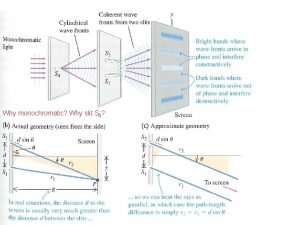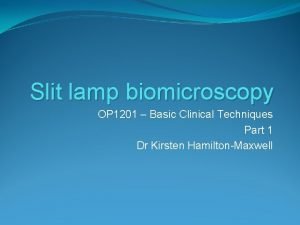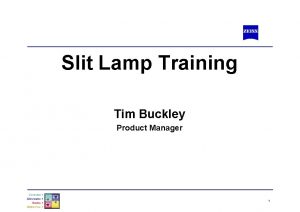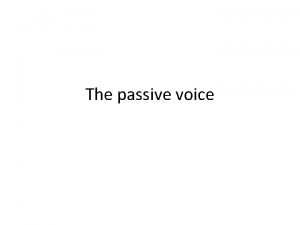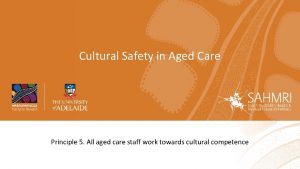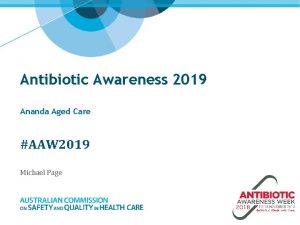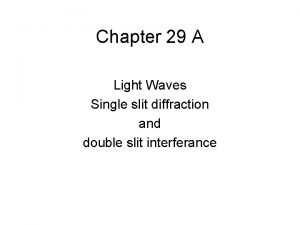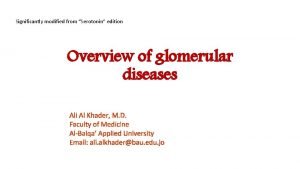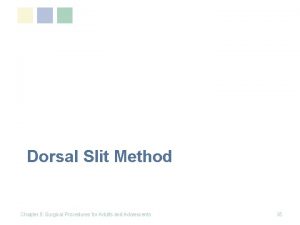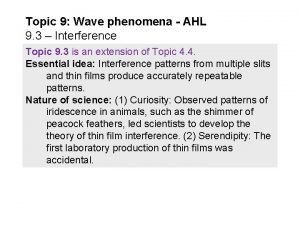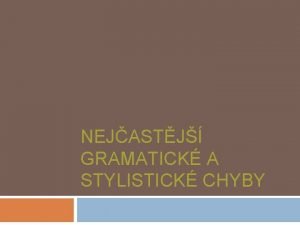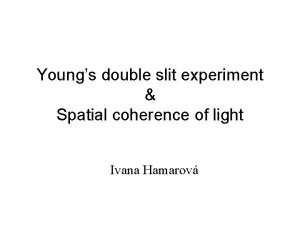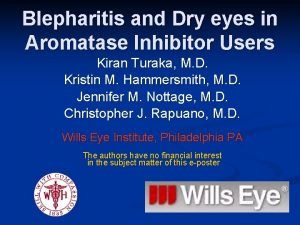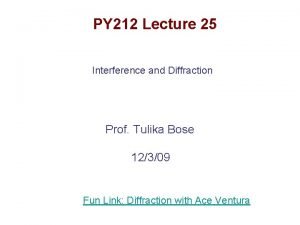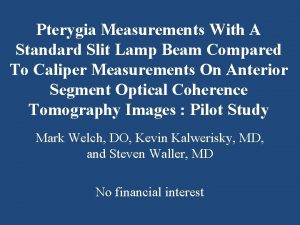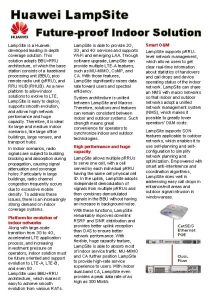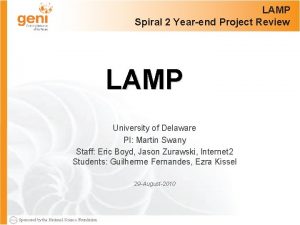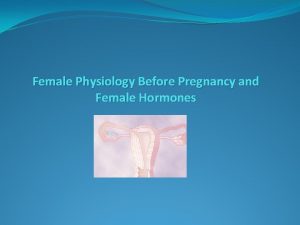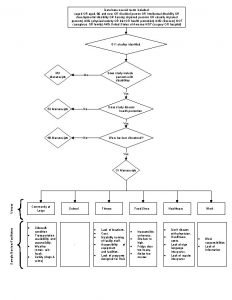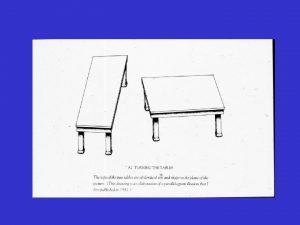Surprises at the Slit Lamp Female aged 42



























- Slides: 27

Surprises at the Slit Lamp

Female aged 42, complaining of mild FBS. Non-contact lens wearer.

SLK (superior limbic keratoconjunctivits) • Other signs: tarsal papillary reaction. • Usually bilateral, may be asymmetrical. • Seen in soft CL wearers in conjunction with thiomersal preserved solutions. • Seen in patients with thyroid problems.

Optometrist’s Management 1. Unpreserved artificial tears 2. Bandage CL 3. Plug the upper puncta 4. All of the above 5. Refer

Bilateral Appearance Male aged 36. Asymptomatic. Routine eye exam.

Refer or not? 1. Refer 2. Don’t refer

Ectropion Uveae • It is posterior pigmented iris epithelium on the anterior surface of the iris. • Rare, congenital, non-progressive.

7 year old male c/o bilateral itchy eyes. No tarsal involvement.

Phlyctens • Normally asymptomatic. • Can be single or multiple. • They are prone to recur, are thought to be due to a type of allergy to certain bacteria. • Associated with TB, intestinal parasites, tonsilitis, ulcerative blepharitis.

Optometrist’s Management 1. Lid hygiene (LH) and refer for steroids 2. LH alone 3. LH and OTC antiallergy drops.

• 45 year old man had bilateral LASIK to correct hyperopia • 6 mths post-operatively (3 mths after being discharged) he came in c/o intermittent blur around lights coming from his RE only. • He had no symptoms at the time of presentation. IOPs were R: 23 L: 18 mm Hg

Optometrist’s Management 1. Same day referral to ophthalmologist 2. Refer to ophthalmologist within a week 3. Refer to ophthalmologist via the GP 4. Instil pilocarpine and refer immediately

• Blue-eyed 28 year old female. • R: -1. 00/-0. 75 x 180 VA 6/5 • L: -1. 00/-0. 75 x 175 VA 6/5 Px reports disabling glare from headlights at night. Px also reports that she does not tan easily. Image from http: //www. sarawakeyecare. com/Atlasofophthalmology/anteriorsegment/Anteriorsegment 28 albinoiris. htm Atlas of ophthalmology, ophthalmology unit, University of Malaysia and ophthalmology Department, Sarawak general hospital

Albinoidism • Albinoidism is diagnosed when the patient has iris transillumination defects but normal VA, no nystagmus and no foveal hypoplasia. This is what differentiates it from albinism.

Optometrist’s Management 1. Amber tinted glasses for night driving 2. MAR coated glasses for night driving 3. Grey tinted glasses for night driving 4. Opaque tinted contact lenses 5. Polarised glasses

Tints for Night Driving • Yellow or amber tinted lenses have been shown to be dangerous for night driving. • According to European standards lenses with less than 75% transmission (or greater than 25% absorption) should not be used for night driving. • Ultravision make a hydrogel custom-made opaque tinted lens to any Rx and base curve.

Female aged 35. Routine eye exam. Non-contact lens wearer.

Image retrieved from: http: //webeye. ophth. uiowa. edu/eyeforum/atlas/pages/pigment-dispersion-syndrome-glaucoma. html Eye. Rounds. org, the University of Iowa

Pigment Dispersion Syndrome • IOP spikes sometimes during or after exercise. • Associations: males, age 20 – 40, myopia. • It is estimated that approx 30% of patients with PDS will develop pigmentary glaucoma with men three times more likely to develop glaucoma than women.

Optometrist’s Management 1. Refer to ophthalmologist 2. Monitor fields and IOPs every 3 mths and refer if they change 3. Monitor fields and IOPs every 6 mths and refer if they change 4. Monitor fields and IOPs annually and refer if they change

Unilateral. Hyperaemia confined to temporal bulbar conjunctiva. No other findings or relevant history. 35 yr old female, full time soft CL wearer. Asymptomatic but bothered by cosmetic appearance of red eye.

Episcleritis • Inflammation of the episclera. • Cause unknown. • May be associated with rheumatoid arthritis, lupus, IBS, herpes, stress, hormonal changes. • Most cases will resolve spontaneously within 2 – 3 weeks. • Px can be referred for steroid drops to speed resolution.

A full time CL wearer comes in to you with unilateral episcleritis. Does the patient have to cease lens wear until the condition has resolved? 1. Yes 2. No

Elderly, asymptomatic patient.

Crocodile Shagreen • This is the result of an irregularity of the stromal collagen lamellae which occurs with age. • Associated with older patients. • Asymptomatic. No effect on vision.

Female. Age 45 Difficulty with night driving. R: -2. 50/-0. 25 x 35 VA 6/9. 5 L: -2. 25/-0. 75 x 165 VA 6/9. 5+2

Corneal Farinata • • Ageing change of the cornea Bilateral deep stromal opacities. Best seen on retro illumination They have no effect on vision and therefore require no treatment
 Double slit vs single slit
Double slit vs single slit Retro illumination technique
Retro illumination technique Retro illumination iris
Retro illumination iris Your impolite tone surprises me passive voice
Your impolite tone surprises me passive voice Predictable surprises examples
Predictable surprises examples For a moment the last sunshine fell
For a moment the last sunshine fell Aged care matters
Aged care matters Dignity of risk meaning
Dignity of risk meaning Open disclosure in aged care
Open disclosure in aged care 5 cultural safety principles
5 cultural safety principles Kimberley aged care services
Kimberley aged care services Nettles poem questions and answers
Nettles poem questions and answers My aged care
My aged care Ananda aged care
Ananda aged care What is cultural safety in aged care
What is cultural safety in aged care Nettles poem analysis
Nettles poem analysis For viewing tiny objects in a microscope diffraction is
For viewing tiny objects in a microscope diffraction is Linear immunofluorescence vs granular
Linear immunofluorescence vs granular Vertical
Vertical Vertical wave
Vertical wave Slít x zlít
Slít x zlít Double slit experiment
Double slit experiment Double slit experiment
Double slit experiment Scit vs slit
Scit vs slit Double slit experiment
Double slit experiment Aromatase inhibitors eye problems
Aromatase inhibitors eye problems Double slit diffraction
Double slit diffraction Slit valve
Slit valve
